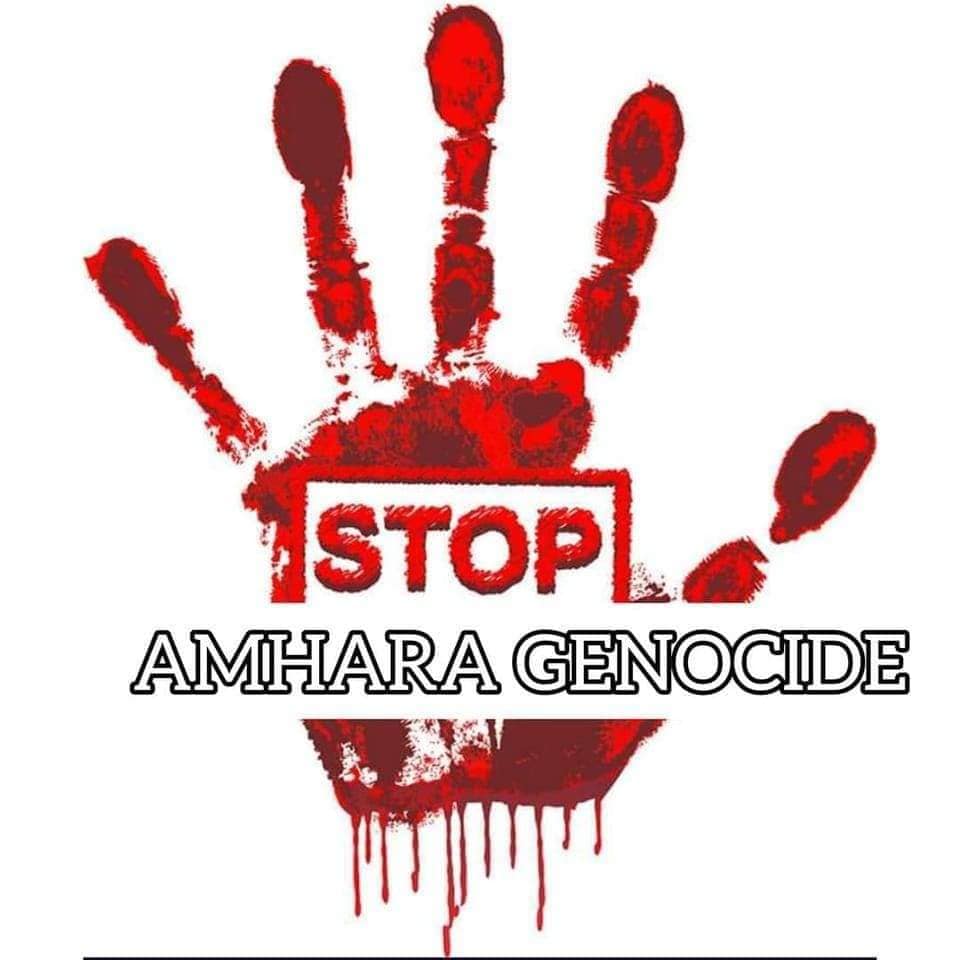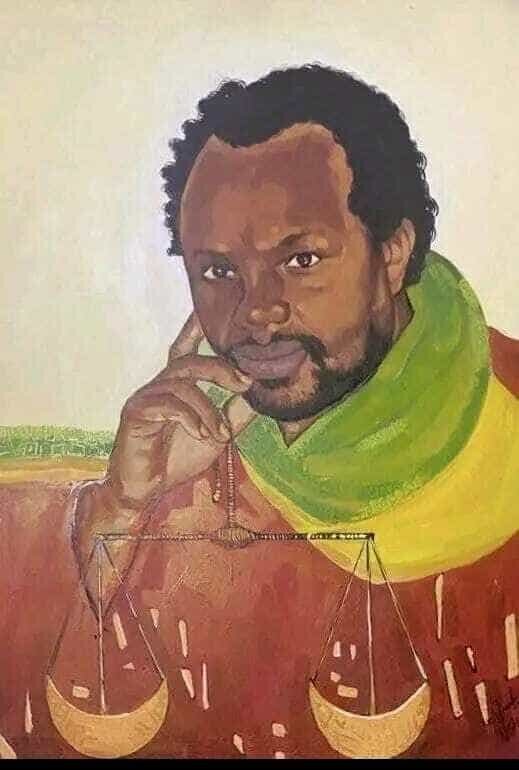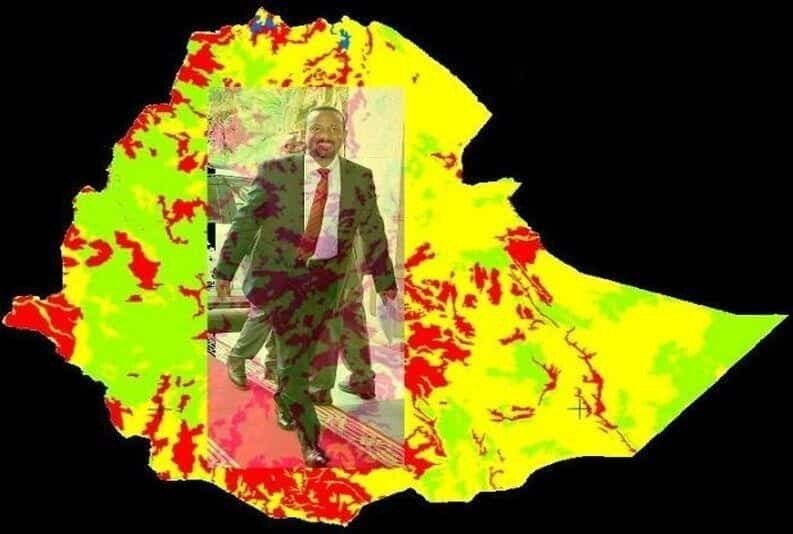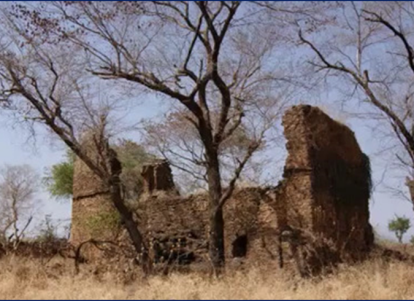
ቴዎድሮስ ታደሰ በለይ (ጥናታዊ ጽሑፍ)
- ሥነ-ዘዴ
ይህ ጥናታዊ ጽሁፍ በመረጃ መሰብሰቢያ ስነ ዘዴነት ጥቅም ላይ ያዋለው የተለያዩ ጽሁፎችን፣ ታሪካዊ ማስረጃዎችን፣ አለም አቀፍ እና የሀገር ውስጥ ህጎችን፣ ጥናታዊ ጽሁፎችን፣ መጽሐፎችን፣ መጽሄቶችን፣ የሰብዓዊ መብት ጥሰት የሚመለከቱ ሪፖርቶችን ሌሎች ሰነዶችን በጥልቀት በመዳሰስ በመመርመር እና በመተንተን የተጠናከረ ነው። በዚህም አዘጋጁ ጥቅም ላይ ያዋላቸውን ስራዎች በሙሉ በምንጭ፣ በማጣቀሻነት እና በዋቢ መጽሐፍት ዝርዝር ተገቢውን እውቅና ሰጥቷል።
- ዳራ
የወልቃይት ጠገዴ መልከዓ ምድር በሰሜን ተከዜ (ኤርትራ)፣ በደቡብ ስሜን አርማጭሆ፣ በምስራቅ በኩል ተከዜ ወንዝ (ትግራይ)፣ በምዕራብ በኩል ደሞ ከሱዳን ጋር ይዋሰናል። ወልቃይት ጠገዴ ጠለምት በውል በሚታወቀው የኢትዮጵያ ታሪክ በበጌምድርና ጎንደር ክፍለ ሀገር፣ ስሜን እና ወገራ አውራጃ ሲተዳደር ቆይቷል። የትግራይ እና የበጌምድር (ጎንደር) ወሰን ተከዜ ስለመሆኑ አያሌ የታሪክ ማስረጃዎች አሉ፡፡ ከ1983 እስከ ጥቅምት/2013 ዓ.ም. የወያኔ ኃይል ቀጠናውን በግዳጅ ይዞ ወደትግራይ ክልል በማጠቃለል የተለያዮ ግፍ፣ በደል፣ የሥነ-ሕዝብ ምህንድስና እና አለም አቀፍ ወንጀሎች እየፈጸመ ሲያስተዳድረው ቆይቷል።
የወልቃይት፣ ጠገዴና ጠለምት አካባቢ የወያኔ ኃይል ጥቅምት 24/2013 ዓ.ም. የሰሜን ዕዝን በማጥቃት በከፈተው ጦርነት የሀገር መከላከያ ሰራዊት እና የዐማራ የጸጥታ ኃይሎች በከፈሉት መስዋዕትነት ነጻ ሊወጣ ችሏል። አካባቢው የግዙፍ የእርሻ ልማት ማዕከል መሆኑን ተከትሎ፣ የተለያዩ የኢትዮጵያ ብሄር ብሄረሰቦችም የሚኖሩበት አካባቢ ነው። ዞኑ ወፍ አርግፍ፣ ቃብትያ፣ ባዕከር፣ ወይናት፣ ማይካድራ፣ ዳንሻ፣ አውራ፣ ማክሰኞ ገበያ፣ ቆራሪትና ቤት ሞሎ የተሰኙ ከተሞችንም በመያዝ በ 4 የገጠር ወረዳዎችና በ 5 የከተማ መስተደድር እየተዳደረ የሚገኝ ሰፊ አካባቢ ነው።
- አስተዳደራዊታሪክ
በአስተዳደራዊ ታሪክ ደረጃ የወልቃይት፣ ጠገዴ፣ ጠለምት (ስሜን ምዕራብ ጎንደር) ታሪክ ከበጌምድር (ጎንደር ዐማራ) ታሪክ የማይነጠል የተጋመደ ታሪክ አለው። ይህን የአስተዳደራዊ ታሪክ በማስረጃ ህግ መመዘኛ መስፈርቶች ማለትም ገለልተኝነት፣ ተዓማኝነት፣ የእውነታ ይዞታ እና አግባብነትን መሰረት በማድረግ የተለያዩ የአገር ውስጥ እና የውጭ ጸሐፊዎች፣ አሳሾች፣ የመንግስታት ቆንስሎች ዲፕሎማቶች፣ የሀይማኖት ሰባኪዎች ሚስዮናዊያን እና የነገሥታት ዜና መዋዕል ጸሐፊዎች ከአክሱም ዘመነ መንግሥት እስከ 1983 ዓ.ም. ድረስ ያሉትን ታሪካዊ ማስረጃዎችን መሰረት በማድረግ እንመልከት።
በዚህ ጽሁፍ ወልቃይት የሚለው ቃል ከተከዜ ወንዝ ምላሽ እስከ አንገረብ ወንዝ እና የሰሜን ተራራ ተፋሰስ ድረስ ያለውን የሰሜን ምዕራብ ጎንደር ግዛቶችን (ወልቃይት፣ ጠገዴ፣ ጠለምት፣ እና ሰቲት ሁመራ) አጠቃሎ የሚወክል ነው። አላማው የቃላት ድግግሞሽን ለማስቀረት እንደሆነ ግንዛቤ ይወሰድ።
- ወልቃይት በአክሱም ዘመነ መንግሥት
- የካርል በተር ጥናት ምስክርነት
ካርል በተር የተባለ የጀርመን ምሁር በአርክዮሎጅ ጥናት ላይ በተመሰረተ “The rise and fall of Axum, Ethiopia: A Geo-Archaeological interpretation” በተሰኘ ስራው የአክሱም ግዛትን የሽሬ አምባ የመረብ እና ተከዜ ተፋሰሶች ምላሽ እንደሚገኝ ጅኦ አርክዮሎጅ ጥናትን መሰረት በማድረግ ገልጿል። “The Axum country side forms part of the plateau of Shire (Troll 1970), a rolling upland at 2,100 - 2,400 m elevation, rising 500 m or so above the rugged valley system of the Mareb and Tekeze rivers.” Karl W. Butzer, p.471-495
- የአክሱም ነገሥታት የድንጋይ ላይ ጽሁፎች
ቀደምት የአክሱም ነገሥታት የብራና ጽሁፍ ከመጀመሩ በፊት የንግሥና ዘመናቸውን፣ ታሪካቸውን፣ ሲያስተዳድሩት የነበሩ ግዛቶችን የገጠሟቸውን የጦርነት አውደ ውጊያዎች ሌሎች ታሪኮችን በድንጋይ ላይ ጽሁፍ የመከተብ ልምምድ ነበራቸው። ከዚህ ጉዳይ ጋር በሚያያዝ ሁኔታ የሦስት ነገሥታት የድንጋይ ላይ ጽሁፍ በተለያየ ጊዜ በምዕራባዊያን የአርክዮሎች አጥኝዎች ተተርጉመው የተጻፉትን እንመልከት።
- 1.የዳግማዊ አጼ ኢዛና የድንጋይ ላይ ጽሁፍ “የወልቃይት ነገድ ጦርነት ሳይገጥም ገበረልኝ” ይላል። (ዩሪ ኤም ኬ አክሱም)
- 2.የአጼ ካሌብ የድንጋይ ላይ ጽሁፍ “የተከዜን ወንዝ ከተሻገርሁ በኋላ የስሜን ነገድን አስገበርሁ” ይላል። (ኮስሞስ 517 እኤአ)
- የአጼ ሐጻኒ ዳንኤል የድንጋይ ላይ ጽሁፍ “የወልቃይት ሰዎች ወደ አክሱም ሐስላን ወደሚባለው አገር ወጥተው አገር ስላጠፉ ተዋግቸ መለስኳቸው 10ሽህ በግ እና 3ሽህ ፍየል ዘርፌያቸው ሰዎቼም አገሩን ዘርፈውት ወደ አገራችን ተመለስን።” በማለት ከትቧል። (ፕሮፌሰር ሊትማን፣ ጀርመን 1903)
እነዚህ ከላይ የተመለከቱት የድንጋይ ላይ ጽሁፎች በአክሱም ዘመነ መንግሥት የአገዛዝ ዘመን የትግራይ መሳፍቶች (ገዥዎች) ወልቃይትን የትግራይ አካል አድርገው ያላስተዳደሩት መሆኑን፣ ይልቁንም በስሜን እና በጌምድር ግዛት ውስጥ ሲተዳደሩ እንደነበር በማያጠራጥር ሁኔታ ያስረዳል።
- ወልቃይት፤በዛግዌ ስርወ መንግሥት
ከ1150 እስከ 1270 በቆየው የዛጉየ ዘመነ መንግሥት ክርስትና በተስፋፋበት ጊዜ የትግራይ ወሰን የተከዜ ወንዝ ነው። ለዚህም ማስረጃው የንጉስ ነአኩቶ ለአብ ገደልና ድርሳናት ናቸው። በዘመንፈስ ቅዱስ እልፍዮስ የተዘጋጀው ድርሳን “ከተከዜ ወንዝ በምዕራብ በኩል የሚኖሩ የበጌምድር ሰዎች ለንጉሥ አንገብርም በማለት በማመፃቸው ንጉሡ በፀሎት ቀጣቸው።” በማለት ዘግበዋል። ይህም ወልቃይት በጥንቱ በጌ ምድር ስር ይተዳደር እንደነበር ያሳያል።
ከዚህ ባሻገር ሀሪስ የተባለ የጀርመን ምሁር “The Highlands of Aethiopia” በተሰኘ መጽሐፉ የሰጠውን ምስክርነት ስንመለከት “ከዛግዌ ስርዎ መንግሥት መውደቅ በኋላ ቀደም ሲል ከሥልጣን የተወገዱ የሰለሞን ተወላጆች ወደ ሥልጣን መምጣታቸውን ተከትሎ አማርኛ ቋንቋ ከዚህያ በፊት ጥቅም ላይ ሲውል የነበረው የግዕዝ ቋንቋ ሙሉ በሙሉ በመተካት አማረኛ የቤተመንግሥት ቋንቋ ሆነ። በዚህም ሽዋን ጭምሮ ከተከዜ እስከ አባይ በሚኖሩ የጎንደር፣ የጎጃም እና ወሎ ሕዝብ ላይ የበላይነት ያለው የመግባቢያ ቋንቋ በመሆን በአብዛኛው የአቢሲኒያ ሕዝብ ዘንድ የሚነገር ብሄራዊ ቋንቋ ለመሆን ችሏል።” (Harris, “The Highlands of Aethiopia: In Three Volumes, Volume 3” 1843,) የሚል እናገኛለን። ይህም ከተከዜ ወንዝ ምላሽ ያለው ቀጠና በዛግዌ ዘመነ መንግሥት የበጌምድር ግዛት መሆኑን ያስረዳል።
- ወልቃይት በሰለሞናዊ ስርዎ-መንግሥት
- መጽሐፈ አክሱም
በአስራ አራተኛው ክፍለ ዘመን በአክሱም ንቡረ-ዕድ የተፃፈው ‹‹መፅሐፍ አክሱም›› የተሰኘው የትግራይ ገዥ ራስ ስሁል ሚካኤል ለጀምስ ብሩክ ያበረከቱት በጀምስ ብሩስና አርኖል ዲአባዲ አማካኝነት ወደ አውሮፓ የተወሰደው ዶክመንት እንደሚገለፀው በዚያን ግዜ የትግራይ አስተዳደር ስር አክሱምን አማክለው በተዋቀሩት 12ቱ ጠቅላይ ግዛት ማለትም፤ ተንቤን፣ ሽሬ፣ አጋሜ፣ ሀማሴን፣ ቡር፣ ሳማ፣ ስርዐይ፣ አምባ ሰናይት፣ ገራልታ እና ሳህራት ዝርዝር ውስጥ ወልቃይት ጠገዴ ሆነ ጠለምት ተካትተው አይገኙም። (Carlo Conti Rossini. Liber Axumae. Book of Axum) ይህም በአጼ ዘርዓ ያቆብ ዘመነ መንግሥት በ14ተኛው ክፍለ ዘመን የተጻፈው መጽሐፈ አክሱም ወልቃይት የትግራይ አስተዳደር አካል አለመሆኑን በማያሻማ ሁኔታ ያስረዳል።
- የ15ኛው ክፍለ ዘመን ሚስዮናዊያን ምስክርነት
በአስራ አምስተኛው ክፍለ ዘመን የካቶሊክ እምነትን ለመስበክ ወደ ኢትዮጵያ የመጡ ሚስዮናዊያን የነበራቸውን ተልኮ እና በወቅቱ የሰፈሩባቸውን ቀጠናዎች የሚያትት የቪክቶር ፈርናንዴዝ “Enlivening the dying ruins: history and archaeology of the Jesuit Missions in Ethiopia, 1557–1632 የተሰኘ ታሪክ እና አርክዮሎጅን አጣምሮ የያዘ በጥናት ላይ የተመሰረተ ካርታ ወልቃይት እና ዋልድባ (ጠለምት) ከትግራይ አስተዳደር ውጭ መሆናቸውን በግልጽ ያሳያል።
በ15ኛው ክፍለ ዘመን የፖርቱጋል ጦር ተከትለው በክሪስታቮ ደጋማ መሪነት ወደ ኢትዮጵያ የመጡ ሚስዮናዊያን አንድሬስ ዲ አቬይዶ፣ ፍራንሲስኮ አልባሬዝ፣ ፔድሮ ፒያዝ እና ሌሎች በሰጡት ምስክርነት ወልቃይት ጠገዴ ጠለምት በበጌምድር ጎንደር (ዐማራ) ክፍል መሆናቸውን ያስረግጣል።
ለአብነት ፍራንሲስኮ አልባሬዝ የተባለ ፖሪቱጋላዊ የካቶሊክ እምነት ሰባኪ ቄስ በኢትዮጵያ በተለይ በኤርትራ ትግሬና በጌምድር ለ7 ዓመት 1520-1527 እንደቆዩ ይታወቃል፡፡ አልባሬዝ የመጣበት ዋናው ተልኮ የካቶሊክ እምነትን በድብቅ ለመስባክ ቢሆንም የአካባቢውን መልክዓ ምድራዊ ሁኔታ፤ የግዛት አስተዳደርና የሕዝብ አሰፋፈርን በጉዞ ማስታዋሻው ከትቧል፡፡ በጊዜው የነበረውን የግዛት አስተዳደር ሲገልጽ ‹‹ቤጌምድር በኢትዮጵያ ከሚገኙት የአስተዳደር ግዛቶች ውስጥ በጣም ትልቁ ነው›› ይላል፡፡ የቤጌምድር ግዛት በኤርትራና የቤጌምድር ግዛት ከጎጃም ቀጥሎ የሚገኝ ሲሆን እስከ ባህር ነጋሽ (ኤርትራ) ድረስ 3.2 ማይል ርቀት ይዘልቃል›› ሲል ገልፆታል:: (Francisco Alvarze, Narratives f the Portugues Embassy to Abysnnia during the years 1520-1527, Portugal: Haklutee Society, 1881), p. 351)
- ወልቃይትጠገዴ በጎንደር ዘመን (Gonderian Period)
- የታሪካዊ ቅርስ ማስረጃ
የጎንደር ስልጣኔ በተጠነሰሰበት እና የአብያተ መንግሥታት ግንባታ በሚከወንበት ጊዜ በአጼ በካፋ ዘመነ መንግሥት በደጋው ወልቃይት (ወፍ አርግፍ) ተወላጅ የሆኑ ደጃዝማች አያናዝጊ የተባሉ የወልቃይት ባላባት በአጼ በካፋ ዘመነ መንግሥት ከንጉሡ ያገኙትን ድጋፍ መሰረት በማድረግ የስሜን ምዕራብ ጎንደር ቀጠናን የሚያስተዳድሩበት ቤተ-መንግሥት፣ ወልቃይት ውስጥ ‹‹ቤት ሙሉ›› በተባለ ቦታ በጎንደር አብያተ-መንግሥታት አሰራር ጥበብ እና ምህንድስና መገንባት ችለዋል።
ይህም በታሪክ ትምህርት ‹የጎንደር ዘመን› ተብሎ በሚገለጸው በሰሎሞናዊ ስርዎ መንግሥት ኢትዮጵያን ሲያስተዳድሩ የነበሩ የጎንደር ነገሥታት፣ አያተ-መንግሥታትን ሲገነቡ የነበሩት በበጌምድር ግዛት ተወስነው ስለነበር ወልቃይት በዚያን ጊዜ የበጌምድር ጎንደር አካል እንደሆነ በማያጠራጥ ሁኔታ ያስረዳል።
ምስል 1፦ ቪክቶር ፈርናንዴዝ የ15ኛዊ ክፍለ ሚስዮናዊያን የሰፈሩባቸውን፣ የካቶሊክ እምነት ያስተማሩበትን ግዛት እና አስተዳደር የሚያሳይ ካርታ (“Enlivening the dying ruins: history and archaeology of the Jesuit Missions in Ethiopia, 1557–1632 P-28)
ምስል 2፦ ደጃዝማች አያናዝጊ ሁለተኛ በአጼ በካፋ ዘመነ መንግሥት ያሰሩት ቤተ መንግሥት
- የጀምስ ብሩስ ምስክርነት
በጎንደሪያን ዘመን ወደ ኢትዮጵያ የመጣው ስኮትላንዳዊ ተጓዥ ጀምስ ብሩስ (James Brues) የዓባይ ወንዝን መነሻ ለማሰስ ኢትዮጵያ ውስጥ በቆየበት ጊዜ በሚመለከት በጻፈው “travels to discover the source of Nile” በተሰኘው ስራው የትግራይን ግዛት በዚህ መንገድ ገልፆታል፡-
“Tigre is bounded by the territory of the Bahire Negash (Eritrea) that is by the River Mereb on the East and Tekezze up on the west. It is about one hundred and twenty miles broad from east to west and two hundred from north to south”
ተዛማጅ ትርጉም፡-
“የትግራይ ምድር በባህረነጋሽ ኤርትራ የተከበበ ሲሆን፣ በምስራቅ መረብ ወንዝ እና በምዕራብ ተከዜ ወንዝ ያዋስነዋል። ከምስራቅ ወደ ምዕራብ አንድ መቶ ሃያ ማይል ሲያካልል፣ ከሰሜን ወደ ደቡብ ያለው ደግሞ 2 መቶ ማይል ነው።”
ጀምስ ብሩስ በዚሁ መጽሐፉ ላይ “Tekezze is the natural boundary between Tigre and Amhara” Travells to. ‹‹ተከዜ የ ዐማራ እና የትግራይ የተፈጥሮ ድንበር ነው።›› (V.3, P. 582) በማለት ቅልብጭ ያለ ምስክርነቱን ሰጥቷል።
3.5. ወልቃይት በዘመነ መሳፍንት
በኢትዮጵያ ታሪክ የትግራዩ መስፍን የጎንደሩን ንጉስ ዐፄ ዕዮሃስን በጎንደር ቤተመንግሥት ካስገደላቸው በኋላ የጎንደር የስልጣኔ ዘመን በማክተም በኢትዮጵያ ታሪክ ውስጥ የማዕከላዊ መንግሥት ሚና የተዳከመበት በሌላ መልኩ ደግሞ የየአካባቢው ገዥ መሳፍንቶች ኃይል የገነነበት ዘመነ-መሳፍንት እ.ኤ.አ (1769 -1855) ተፈጥሯል፡፡ (ፕሮፌሰር ባህሩ ዘውዴ የኢትዮጵያ ታሪክ)
በዚህ ዘመን ከባምብሎ እስከ ተከዜ ያለው (ባምብሎ በመለስ ተከዜ በፈሰስ) ስሜኑ ክፍል ለረጅም ዘመናት በሰሜን ባላባቶች በራስ ገብሬ በልጃቸውና በልጅ ልጃቸው ኃይለማርያምና በራስ ውቤ ይተዳደር እንደነበር የአጼ ቴዎድሮስን ታሪክ የጻፉ ሶስቱ ጸኃፊዎች (አለቃ/ደብተራ ዘነበ፤ አለቃ ወ/ማርያምና ስሙ ያልታወቀ ጽሀፊ) ከትበውት እናገኛለን።
ከዚህ ባሻገር በስሜን ታሪክ ውስጥ ራስ ውቤ እጅግ በጣም ጠንካራ ገዥ ስለነበሩ በመሳፍንቶች ዘመን የማዕከላዊ መንግሥት ሲዳከም የሰሜንን ክፍል የራሳቸው ግዛት አድርገው በማስተዳደር ከግብጽ እና ሱዳን ሲሰነዘር የነበረውን ጥቃት መክተው ቀጠናውን አስከብረውታል።
በተጨማሪ Seben Rubnson የተባለ ጸሐፊ “The Survival Of Ethiopian Independence“ (September, 2003) በተሰኘ መጽሐፉ በገጽ 218 ላይ በምስል ሦስት የታያያዘውን ኢትዮጵያ በዘመነ መሳፍንት ጊዜ የነበራትን ግዛት የሚያሳይ ካርታ አስፍሮ እናገኘዋለን። ይህም ወልቃይት፣ ጠገዴና ጠለምት በስሜን በጌምድር አስተዳደር ስር ይተዳደር እንደነበር በማያሻማ ሁኔታ ያስረዳል።
ምስል 3፦ የዘመነ መሳፍን ኢትዮጵያ የግዛት አስተዳደር የሚያሳይ ካርታ (Seben Rubnson, “the survival of Ethiopian independence“ 1991 kuraz, page 218)
3.6. ወልቃይት በዳግማዊ ቴዎድሮስ
- የቆንስልፕላውድን ምስክርነት
በዘመነ መሳፍንት የመጨረሻ ዘመን አካባቢ የእንግሊዝ መንግሥትን ወክሎ ከራስ አሊ ትንሹ የመሳፍንት መንግሥት ጋር ስምምነት ለማድረግ ወደ ኢትዮጵያ የመጣው ከጊዜ በኃላ አጼ ቴዎድሮስ ኢትዮጵያን የማዋሀድ እንቅስቃሴ በጀመሩበት ጊዜ የንጉሡ ወዳጅ ሆኖ እስከ ዕለተ ሞቱ ድረስ በኢትዮጵያ የኖረው ሚስዮናዊ ፕላውድን “Travels in Abyssinia With an Account of a Mission to Ras Ali in 1848” በተሰኘ መጽሐፉ የትግራይን ግዛት እንዲህ ገልጾታል፡-
“… The region of Tigray consisted of all Christian regions north of the Tekeze River. i.e. Hamasen, Saraye, Akale guzay, Agame, Tigray proper, Shire, Adiabo, Temben, Inderta, and Silalo. the river Tekeze is the line separating the Tigray province and Gondar”
ትርጉም፡-
“የትግራይ ግዛት ከተከዜ ወንዝ በስተ ሰሜን ያሉትን ሀማሴን፣ ሰርዓይ፣ አካለ ጉዛይ፣ አጋሜ፣ መደበኛው ትግሬ፣ ሽሬ አዲአቦ፣ ተንቤን፣ እንደርታ እና ስላሎን የተሰኙ የክርስቲያን ቀጠናወችን የያዘ ሲሆን፤ የተከዜ ወንዝ የትግራይ እና የጎንደር ግዛቶችን የሚለይ ወሰን ነው።”
የሚል ምስክርነቱን ሰጥቶ እናገኛለን። ይህም ወልቃይት ከትግራይ አስተዳደር ውጭ መሆኑን እና ተከዜ የጎንደር እና የትግራይ ሕዝብ እና አስተዳደር የተፈጥሮ ደንበር መሆኑን ያስረግጣል።
- የሀርሙዝ ራሴም ምስክርነት
ሀርሙዝ ራሳም (Hormuzd Rassam) የተባለ በዳግማዊ ቴዎድሮስ ዘመን ከእንግሊዝ ጦር ጋር የመጣ ዲፕሎማት የእንግሊዝ መንግሥት የነበረውን ተልዕኮ በተረከበት መፅሀፍ «Narrative of the British Mission to Theodore, King of Abyssinia». የተሰኘ መጽሐፍ ደሞ የሚከተለውን አስፍሯል፡-
“I take this opportunity of remarking that the term “Amhara,” as now used by the Abyssinians, in an ethno-logical sense, designates the inhabitants of the country lying west of the Takkaze, and also south of that river, as far as the province of Gojjam.”
ትርጉም፡-
“ይህን አጋጣሚ ዐማራ የሚባለውን ስያሜ ለመለየት ተጠቅሜበታለሁ በዚህም አቢሲኒያዊያን በመባል የሚታወቁ ከተከዜ ወንዝ በስተ ደቡብ እና በስተ ምዕራብ እስከ ጎጃም ክፍለ ሀገር ድረስ የሚኖሩት በንንፅራዊ የሰው ዘሮች ጥናት የ ዐማራ ህዝቦች ናቸው።”
ይህም ከተከዜ ምላሽ ያለው ሕዝብ የዐማራ ማንነት ያለው ሕዝብ መሆኑን እና የወልቃይት ዐማራነትን በማያጠራጥር ሁኔታ ያስረዳል።
- የሳሙኤል ጎባልተ እና ሮበር ቢይርድ ምስክርነት
ሳሙኤል ጎባልተ እና ሮበር ቢይርድ (Samuel Gobat and Robert Binder) የተሰኙ በዳግማዊ ቴዎድሮስ የሥልጣን ዘመን የመጡ ፅሐፊዎች ደግሞ Journal of three years stay in Abyssiniya. በተሰኘ የማስታወሻ መፅሄታቸው የሚከተለውን ከትበዋል፡-
“The Amhara and Tigre independent state are separated partly by the River Tekezze and partly by the lofty mountains of Semin the inhabitants of the Amhara and Tigre are distinguished from each other, not only by different language, but also by a distinct national character (culture, customs, identity, manners ECT. ).”
ትርጉም፡-
“የዐማራ እና የትግራይ ሰፋፊ ግዛቶችን የተከዜ ወንዝ እና ሰንሰለታማዎቹ የሰሜን ተራራወች ተፈጥሯዊ ደንበር ሆኖ ይለያቸዋል። በሁለቱ ግዛቶች ላይ በሚኖሩ ህዝቦች መካከል ያለው ልዩነት የቋንቋ ብቻ ሳይሆን የተለየ፣ ጉልህና ግልጽ የሆነ የብሄራዊ ማንነት ልዩነት አላቸው።” (S.G. & R (1850) Journal of three years stay in Abyssiniya. P.37.)
በማለት ከትበዋል።
- ወልቃይትበአጼ ዮሀንስ ዘመነ መንግሥት
- የፕሮፌሰር ሬክላስ ምስክርነት
በአፄ ዮሐንስ ዘመነ መንግሥት ወልቃይት፣ ጠገዴና ጠለምት የትግራይ የአስተዳደር ክፍል አለመሆናቸውን ፈረንሳዊ የህብረተሰብ ሳይንስ ሊቁ ፕሮፌሰር ሬክላስ The Earth and its Inhabitants, Africa: South and east Africa, 1880 በተሰኘ መጽሃፋቸው ወልቃይት፣ ጠገዴና ጠለምት በአጼ ዮሀንስ ዘመነ መንግሥት የዐማራ ግዛት መሆኑን እንዲህ በግልፅ ሰንደውታል፡-
“The Amhara government provinces are: Dembia, Chilga, Yantagara, Dagussa, Kuara, Begemidir, Guna, Saint, Wadla, Delanta, Wogera, Simen, Telemit, Armachiho, Tegdie, Qolla Wogera, Waldiba, and Wolkait.”
ትርጉም፡-
“የ ዐማራ ግዛት የሆኑት፦ ደምቢያ፣ ጭልጋ፣ ያታናግራ፣ ዳጉሳ፣ ቋራ፣ በጌምድር፣ ጉና፣ ሳይንት፣ ዋድላ፣ ደላንታ፣ ወገራ፣ ስሜን፣ ጠለምት፣ አርማጭሆ፣ ጠገዴ፣ ቆላ ወገራ፣ ዋልድባ እና ወልቃይት ናቸው።” (Elisée Reclus ,The Earth and its Inhabitants, Africa: South and east Africa, 1880, p, 443)
- ወልቃይት በዳግማዊ ምኒልክ ዘመነ መንግሥት
- የዮሴፍኢምሊ ምስክርነት
ዮሴፍ ኢምሊ የተባለ በዳግማዊ ምኒሊክ ዘመን ኢትዮጵያን የጎበኘው ሌላኛው የፍሬንች ሚስዮናዊ «Histoire politique et religieuse d'Abyssinie» በተሰኘ መጽሐፉ የትግራይን ግዛት እንዲህ ገልጾታል፡-
“Amhara districts that border with the Tigre, beyond the Tekkeze, are: Welkait, Enseeya, and, in front of Adet Plateau, Tsellemt that begins north of the Semein chain of mountains.”
ትርጉም፡-
“የዐማራ ግዛት ሆኖ ከትግራይ ጋር ከተከዜ ምላሽ የሚያዋስነው ደንበር ወልቃይት፣ እንሲያ እና የአዴት አንባ ፊት ለፊት የሚገኘው የሰንሰለታማወቹ የሰሜን ተራራ መነሻ የሆነው ጠለምት ነው።”
በማለት ቅልብጭ ያለ ምስክርነቱን ሰጥቶ እናገኛለን።
ከዚህ ባሻገር ዳግማዊ ምኒሊክ “እንደ አባትህ እደር” በተሰኘ የአስተዳደር ፖሊሲያቸው በ ዐማራና በትግራይ መካከል ያለውን የግዛት አስተዳደር ሳያፋልሱ በስሜን፣ በወገራና በበጌምድር አዲስ መዋቅር ዘርግተዋል፡፡ ከበምብሎ እስከ ተከዜ ያለውን (ለረጅም ዘመናት በሰሜን ባላባቶች በራስ ገብሬ በልጃቸውና በልጅ ልጃቸው ኃይለማርያምና በደጃች ውቤ ይተዳደር የነበረውን አካባቢ) የራስ ወሬኛ (ወልደስላሴ) ግዛት አደረጉት፡፡ ለግዛቱም ውቤ ቀመስ የሚለውን አዲስ ስያሜ ሰጡት፡፡ የወገራ ግዛት ላይ የራስ ወሬኛ (ወልደስላሴ) ልጃቸውን ደጃች ነጋሽን ሲሾሙት በቤጌምድር ላይ ደግሞ ፊታውራሪ ዘውዴን ሹመዋል፡፡
- ወልቃይት እስከ 1983 ዓ.ም.
ከዳግማዊ ምኒሊክ እስከ 1983 ዓ.ም. ያለውን አስተዳደራዊ ታሪክ ስንመለከት፤ በልጅ እያሱ፤ በዘውዲቱና በአልጋ ወራሽ ራስ ተፈሪ የአስተዳደር ዘመናቸውም ወልቃይት ጠገዴ ጠለምትና ሁመራ በትግራይ አስተዳደር ስርም ሆነ የትግራይ ተወላጅ በእነዚህ አካባቢዎች ላይ ተሹሞ ያስተዳድረበትን ዘመን የሚያመለክት መረጃ በፍፁም የለም፡፡ በጣሊያን ወረራ ዋዜማ ከበምብሎ እስከ ተከዜ ያለውን በበላይነት ያስተዳደሩት ደጃዝማች አያሌው ብሩ ናቸው፡፡ ፋሽስት ጣሊያን ኢትዮጵያን በወረረበት ዘመን (ከ1928 -1933) አስተዳደሩን በስድስት ግዛቶች ያዋቀረ ሲሆን፤ እነሱም ዐማራ፣ ኤርትራና ትግሬ፣ ሐረር፣ ኦሮሞ፣ ሲዳማ፣ ሸዋና ሶማሌ ናቸው፡፡
የጣሊያን አስተዳደራዊ መዋቅር ዘርንና ቋንቋን መሰረት ያደረገ በመሆኑ አማርኛ ተናጋሪ የሆኑት የወልቃይት፣ ጠገዴ፣ ጠለምትና ሁመራ እንደቀደመው ሁሉ የ ዐማራ ግዛት ስር አድርጓቸዋል፡፡ በተመሳሳይ መልኩ ትግርኛ የሚናገሩ የትግራይ አካባቢዎች ትግርኛ ከሚናገሩ ከደጋው የኤርትራ አካባቢ ጋር እንዲቀላቀል ተደረጓል፡፡
በኢትዮጵያ አርበኞች ተጋድሎ ፋሽስት ጣሊያን ኢትዮጵያን ለቅቆ ሲወጣ፣ ንጉሡ ከስደት ከተመለሱ በኋላ እና በደርግ ዘመን በነበረው አስተዳደር ወልቃይት በቀድሞው በጌምድር እና ጎንደር ክፍለሀገር በስሜን እና ወገራ አውራጃ እስከ 1983 ዓ/ም ድረስ ሲተዳደር ቆይቷል።
ከዚህ ባሻገር በተለያየ ጊዜ የትግራይ አስተዳዳሪዎች እና ፖለቲከኞች የሰጡትን ምስክርነት ለአብነት አንስተን ስንመለከት በአጼ ኃይለ ስላሴ ዘመን የትግራይ ክፍለ ሀገር አስተዳደሪ የነበሩት ራስ መንገሻ ስዩም በሰጡት ምስክርነት ወልቃይት ጠገዴ ጠለምት እና ሁመራን እሳቸውም ሆነ ከእሳቸው በፊት የነበሩ አስተዳዳሪዎች አስተዳድረውት እንደማያውቁ እንዲሁም ከቀድሞ ጀምሮ የትግራይ ወሰን በምዕራብ በኩል ተከዜ እንደሆነ መስክረዋል። በተመሳሳይ ሁኔታ እንደ አብረሃም ይህይህ ገብረመድን አርዓያ ዶ/ር አረጋዊ በርኼን የመሳሰሉ የወያኔ የቀድሞ ታጋዮች ወልቃይት ጠገዴን ከሱዳን ጋር ለመገናኘት የውጭ ኮሪደር ለማግኘት እና የቀጠናውን ሀብት ፈልገው እንዳካለሉት መስክረዋል።
በአጠቃላይ ከላይ በዝርዝር የተመለከትናቸው ታሪካዊ ማስረጃዎች እንደሚያሳዩት ወልቃይት፣ ጠገዴ፣ ጠለምት፣ ሰቲት ሁመራ ወይንም ከተከዜ ምላሽ የሚገኘው የስሜን ምዕራብ ጎንደር ቀጠና በውል በሚታወቀው ከአክሱም ዘመነ መንግሥት እስከ 1983 ዓ.ም. ድረስ ባለው የኢትዮጵያ ታሪክ ሲተዳደር የነበረው በስሜን በጌምድር ጠቅላይ ግዛት፣ በጎንደር ክፍለ ሀገር መሆኑን በማያጠራጥር ሁኔታ የሚያስረዳ ሁኖ እናገኘዋለን።
- የወልቃይት ጠገዴ ጠለምት (ሰሜን ምዕራብ ጎንደር) በወያኔ ኃይል
በግዳጅ መያዝ እና ወደ ትግራይ ክልል መካለል
በ1983 ዓ.ም. በትጥቅ ትግል ወደ ሥልጣን በመጣው የወያኔ አገዛዝ በወቅቱ የነበሩ ገዥ ህጎችን በግልጽ በተቃረነ የፖለቲካ ውሳኔ የወልቃይት ጠገዴ ጠለምት ቀጠናዎችን ወደ ትግራይ ክልል ከልሏቸዋል።
ለዓብነት ያህል፡-
- የኢትዮጵያ የሽግግር ጊዜ ቻርተር አንቀፅ ቁጥር 13 “የክልሎች አስተዳደር በብሄሮች አሰፋፈር ላይ ተመርኩዞ ይቋቋማል”፣
- የብሄራዊ ክልላዊ የሽግግር መስተዳድሮችን ማቋቋሚያ አዋጅ ቁጥር 7/1984 በአንቀፅ ቁጥር 4 ደግሞ “የብሄር፣ ብሄረሰብ እና ሕዝብ ኩታ ገጠም አሰፋፈር ለብሄራዊ መስተዳደር ወሰን አከላለል መሰረት ይሆናል” በማለት በአንቀፅ ቁጥር 3 ንዑስ 1 እና 2 በኢትዮጵያ ያሉ 64 ብሄር፣ ብሄረሰብ እና ሕዝብ በ14 ብሄራዊ ክልላዊ የሽግግር መስተዳድሮችን እንደተቋቋሙ ደንግጓል።
ነገር ግን የወልቃይት ጠገዴ ጠለምትና ራያ ሕዝብ በብሄር፣ በኩታ ገጠም አሰፈፈር፣ በማንነትና በቋንቋ ከሚመስለው የቀድሞው በጌምድር (ጎንደር) እና ወሎ ክፍለ ሀገር የተካለሉበት የ ዐማራ ክልል ወጥቶ ወደ ትግራይ ክልል የአስተዳደራዊ ወሰን ሊካለል ችሏል። በዚህም የወልቃይት፣ ጠገዴና ጠለምት ሕዝብ በብሄር፣ በኩታ ገጠም አሰፈፈር፣ በማንነትና በቋንቋ ከሚመስለው የቀድሞው በጌምድር (ጎንደር ክፍለ ሀገር) የተካለሉበት የዐማራ ክልል ወጥቶ ወደ ትግራይ ክልል የአስተዳደራዊ ወሰን ህግን በተቃረነ ሁኔታ ሊካለሉ ችለዋል። ይህ አከላለል ከላይ የተመለከቱት ህጎች ካስቀመጡት መስፈርት ጋር ተቃርኖ በ1967 ዓ.ም. ወያኔ በትጥቅ ትግል ጊዜ ያወጣው ማንፌስቶ ላይ ለትግራይ ሕዝብ እና መሬት የሰጠውን ትርጓሜ ገቢራዊ አድርጓል።
ምስል 4፦ ከጎንደር እና ወሎ ተወስደው ወደ ትግራይ የተካለሉ ግዛቶች
ማኒፌስቶው ለትግራይ ሕዝብ በሰጠው ትርጓሜ “የትግራይ ሕዝብ ማለት በትግራይ ውስጥ የሚኖሩትን እና የትግረኛ ቋንቋ የሚናገሩ ከትግራይ ውጭ የሚኖሩትን በሙሉ ያጠቃልለለ ነው።” በማለት ከደነገገ በኋላ፣ አከታትሎም የትግራይ መሬት “በደቡብ አለውሃ፣ በሰሜን መረብ ሲያካልሉት በምዕራብ በኩል ደግሞ ወልቃይትን እና ፅለምትን ያጠቃልላል።” (መግለጫ፣ ትህነአድ፣ የካቲት 1968 ዓ.ም.) በማለት ደመድሟል።
ይህ ማኒፌስቶ ለትግሬ ሕዝብ እና ለትግራይ መሬት የሰጠው ፖለቲካዊ ትርጉም በንድፈ ሀሳብ ደረጃ ማስታወስ ከማይቻለው ጊዜ ጀምሮ በኢትዮጵያ ታሪክ የሚታወቀውን እና በወቅቱ የነበረውን የትግሬ ሕዝብ እና የትግራይ መሬት በግዛት ተስፋፊነት በመለጠጥ ተከዜን ተሻግሮ በበጌምድር (ጎንደር)፣ በወሎ ራያ፣ ክፍለ ሀገር ስር የነበሩ ግዛቶችን በሙሉ ወደ ትግራይ አካሏል።
(…ይቀጥላል)
https://amharic-zehabesha.com/archives/173712










